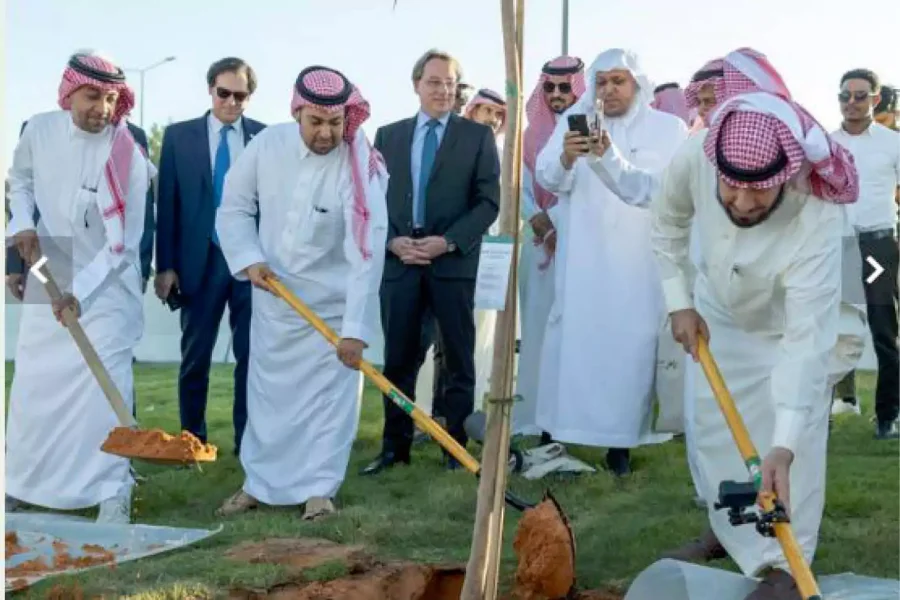Urban greening works in the Irqah neighborhood of Riyadh began on April 18, continuing a tree-planting initiative that is part of the Green Riyadh program.
Irqah is the eighth residential neighborhood in the capital to become part of the urban greening initiative, following Al-Aziziyah, Al-Naseem, Al-Jazeera, Al-Uraija, Qurtuba, Al-Ghadir, and Al-Nakheel, the Saudi Press Agency reported.
In Irqah, works will include the planting of 24,000 trees and shrubs — all of which are heat-tolerant and suitable for the Kingdom’s summer climate, the creation of 39 parks, and the greening of eight schools, 54 mosques, four government buildings, and 69 kilometers of streets. These efforts will, the SPA said, “improve the neighborhood’s landscape, encourage walking, and reduce health care expenses and energy consumption.”
In addition to the greening works, bicycle paths and pedestrian walkways will be created between Mohammed bin Salman Nonprofit City with Wadi Hanifah.
According to the SPA, 38 buildings will also be restored using the Salmani architecture style, and 111 parking lots will be greened.
To mark the start of the urban greening works an exhibition and planting events have been organized, with the aim of raising residents’ awareness about the project and the accompanying works. The exhibition, which is being held near Prince Mishal bin Abdulaziz Mosque in Irqah and runs until April 27, includes renderings of how the neighborhood will look once the project has been completed.
Green Riyadh is one of four major projects related to Riyadh that were launched by King Salman in 2019, and is an initiative of Crown Prince Mohammed bin Salman.
It will involve the planting of more than 7.5 million trees in Riyadh, resulting in 9.1 percent of the city being covered in greenery, and an increase in the per-capita share of green spaces from 1.7 square meters to 28 square meters — 16 times its current level.
Green Riyadh will also help decrease Riyadh’s temperature and improve the city’s air quality, according to the SPA.
By 2030, project developers plan to have carried out urban greening in 120 neighborhoods in the capital.—AN










